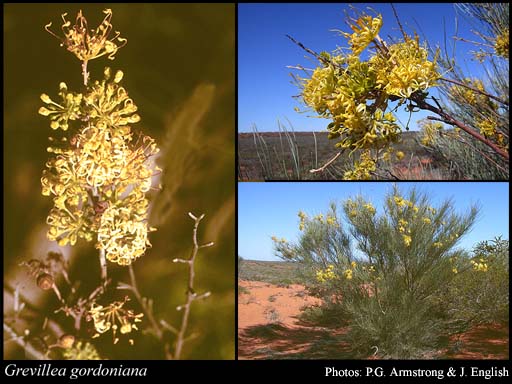- Reference
- J.Roy.Soc.Western Australia 47:56 (1964)
- Conservation Code
- Not threatened
- Naturalised Status
- Native to Western Australia
- Name Status
- Current
Small, non-lignotuberous tree or shrub, 2.5-7 m high. Fl. yellow/orange, Aug to Dec. Sand, sandy clay. Red sand dunes, plains.

Scientific Description
Shrubs, 4-6 m high; branchlets hairy, not glaucous. Leaves alternate, 140-350 mm long, 1-1.5 mm wide, glabrous; lamina terete, entire. Inflorescences axillary or terminal, yellow or orange; pedicels 7-10 mm long. Perianth 5-10 mm long; tepals some joined and some free after flower opens, glabrous; ovary glabrous, stipitate, the stipe 1.5-2.5 mm long; pistil 14-16 mm long, yellow, orange or red, pollen presenter oblique, style glabrous. Follicles glabrous, viscid, dehiscent, 23-28 mm long. Flowers in September, October, November or December. Occurs in the Eremaean (ER) or South-west (SW) Botanical Province(s), in the Carnarvon (CAR), Murchison (MUR) or Avon Wheatbelt (AW) IBRA subregion(s).
Distribution
- IBRA Regions
- Avon Wheatbelt, Carnarvon, Geraldton Sandplains, Yalgoo.
- IBRA Subregions
- Cape Range, Edel, Geraldton Hills, Merredin, Wooramel.
- IMCRA Regions
- Ningaloo, Shark Bay.
- Local Government Areas (LGAs)
- Ashburton, Carnarvon, Chapman Valley, Exmouth, Mukinbudin, Northampton, Shark Bay, Upper Gascoyne.